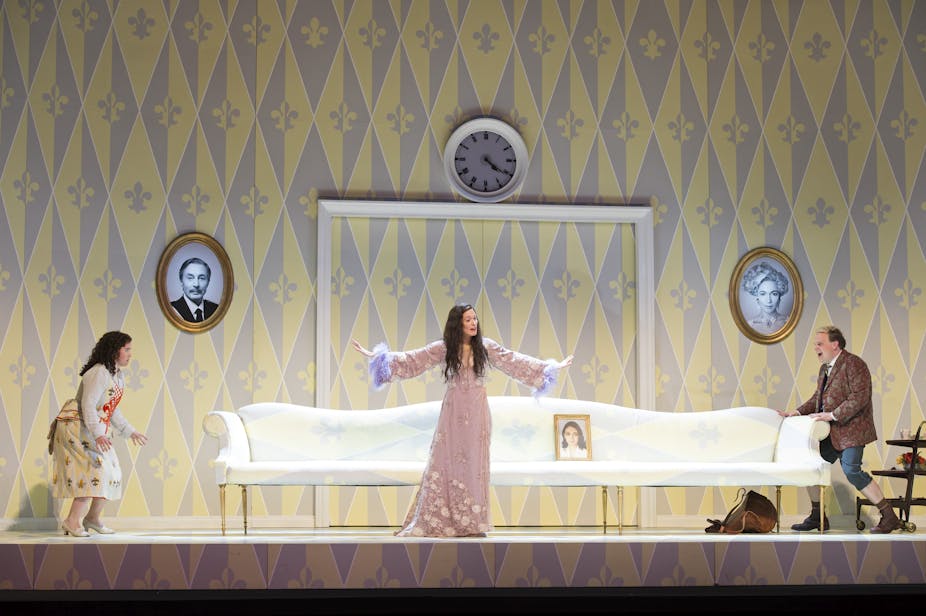Richard Strauss saw – and heard – it all. Born before German unification, he lived through two world wars and the division of Germany into East and West, dying that same year, in 1949. Musically he also lived through times of turbulent change: alive for the premiere of Wagner’s Tristan und Isolde, for which Richard’s father, Franz, played the horn, he died at the time when the young Pierre Boulez composed his Second Piano Sonata, a locus classicus for the post-war avant-garde, which claimed to destroy the foundation of Western art music since the mid-eighteenth century: the idea of the sonata principle.
Strauss was once honoured as a vanguard modernist – the audience for the 1906 premiere of Salome included Mahler, Puccini, Berg, Schoenberg (and Hitler). But, by the time of his death, he appeared at best a reactionary remnant, one who had, perhaps selfishly, turned his back upon musical and political developments alike.
His fifth opera Der Rosenkavalier, currently at Glyndebourne, marked the volte face in 1911. A nostalgic paean to an old Vienna that never was, soaked in the waltzes of Johann Strauss, it delighted conservatives, but puzzled and sometimes infuriated radicals. Many could not understand what Strauss and his librettist, Hugo von Hofmannsthal, were thinking of. This feeling was cemented when it proved to be far from an aberration, as witnessed by the case of their next opera, Ariadne auf Naxos.

Whereas Schoenberg fled Germany in 1933, thereafter eking out a living through teaching in American exile, that year Strauss accepted the presidency of the new, official organisation for German music, the Reichsmusikkammer. Perhaps worse still, the opening sextet of his final opera, Capriccio, received its wartime premiere in the villa of Baldur von Schirach, the Nazi governor of Vienna. To make matters worse the opera itself was hardly, it seemed, a moral beacon, but a trivial, or trivialising, 18th century “conversation piece” concerning the relative importance of words and music in opera.
So Strauss was no political hero, though the recent tendency to judge the actions of others during extremely dangerous times reeks more of cant than Kant. Strauss’s “deal” with Schirach had the composer further Viennese musical life in return for protection for his Jewish daughter-in-law and grandsons. This is not entirely unreasonable, in the circumstances.
Surely we care about him as a composer, not because of day-to-day actions neither better nor worse than those of countless others. And praise and criticism alike of Strauss as composer has often missed the mark. All along, his creed was aestheticism. He thought that poets or artists were not and should not be Shelley’s “unacknowledged legislators of the world”, not because being an artist is unimportant, but because it is so much more important. Strauss reached this view as one of the most extraordinarily well-read of all composers. Rightly or wrongly, he came to that conclusion partly through “materialist” reading of Schopenhauer and Nietzsche.
If we wish – and often, frustrated with Strauss’s apparent lack of “responsibility”, we do – his works to have a “message”, then it is that. Rosenkavalier is no exercise in nostalgia; it is one of the most self-reflexive, self-critical of operas. If you listen carefully you will find that the opera refers continually to itself, rather than the 1740s Vienna of Empress Maria Theresa, which many lazily assume to be the centre of focus.

Instead, nothing is ever quite what it seems. Rosenkavalier does indeed trade in appearances, but only, or at least mostly, to question them. The Marschallin, apparently rejected by her lover, the teenage Octavian, neither asks for nor needs our sympathy. She understands what is to happen, unlike him, or his (unlucky?) subsequent choice, the parvenu Sophie.
There are echoes of Mozart’s Figaro Countess here, but the Marschallin is no mere epigone to her. The unmistakeable play with previous “heroines” notwithstanding, she is an undoubtedly intelligent and complicated woman, granted, or rather assuming, her own voice and agency. Such subtlety offers an alternative to modernity’s vociferous insistence upon its own modernity, an insistence which is perhaps not so modern after all, as Schoenberg would himself acknowledge in his operatic comedy, Von heute auf Morgen.
Strauss’s ironic questioning and delight in ornament, like that of his characters and situations, likewise offers an alternative to strenuous insistence upon “truth”. It is unclear that pseudo-archaeological attempts at “historically informed performance” are superior to a knowingly illusory and allusory artistic homage to Mozart, as some moderns have thought. Strauss plays on the knowledge that we cannot “un-hear” anyone, Mozart, Wagner or even Schoenberg. History, whether that be a matter of what we have experienced politically or aesthetically, remains with us, guides our responses. Strauss knows that and wants us to know that only too well.
Must art be considered an extension of politics? It might serve a greater political end by pointing the way to a different model, fractious yet honourable, in which, as in the overtly metatheatrical Ariadne auf Naxos, all manner of human beings, on- and off-stage, collaborate to produce something infinitely more valuable than the grim Gradgrindisms of neo-liberalism would ever conceive.
Yes, Schoenberg’s uncompromisingly high-modernist preoccupation with “truth” and his Platonic elevation of “idea” over “style” inspire with awe. But do we not sometimes wish to be seduced? When we think about that, as Strauss wills us to do, the distinction between him and modernity is anything but clear-cut. In some senses at least, Strauss’s self-reflexivity sometimes seems more modern still than composers who bear their “political engagement” upon their sleeves.

